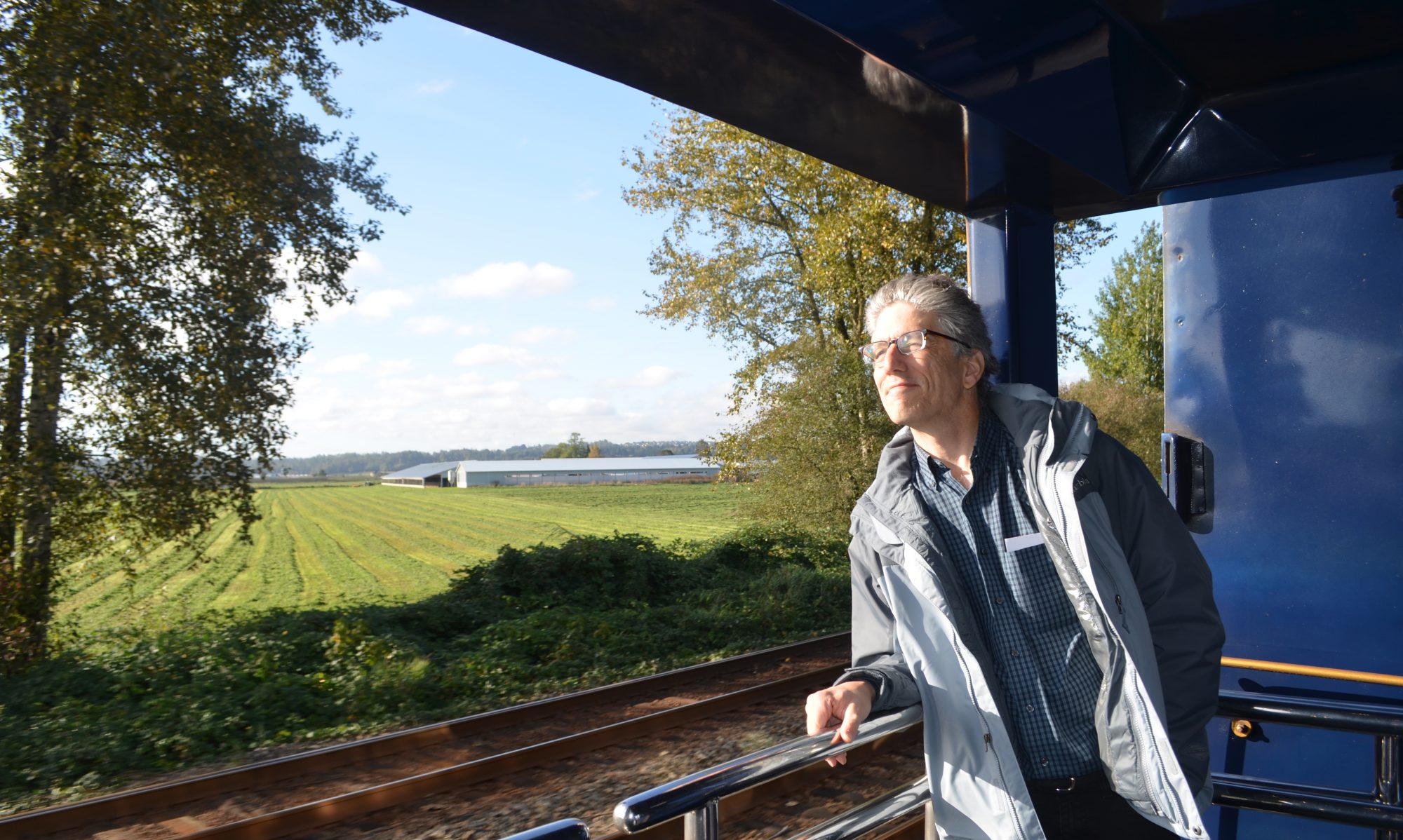If This is the Land of My Forefathers, How Come They Weren’t Here to Meet Me at the Boat?
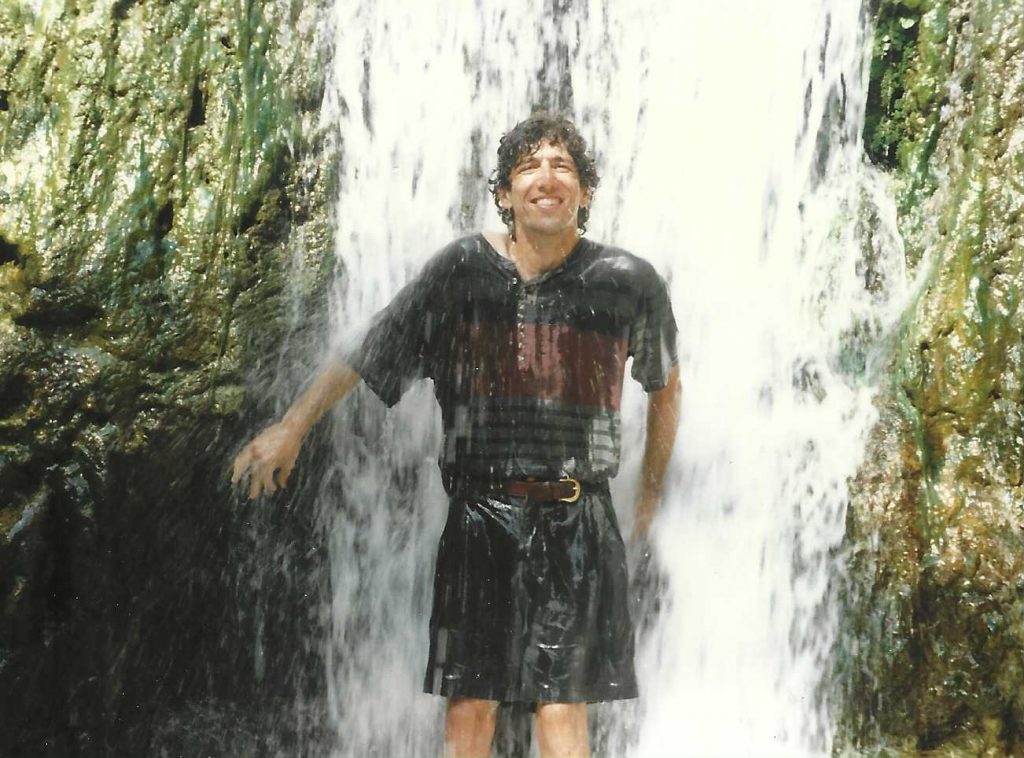
If going to Israel is such a profound emotional experience for a Jew, how come the only thing I felt was gratitude that I had reached dry land?
I’d been hearing this claptrap about how Jews who visited the Holy Land felt an immediate emotional attachment to the land or claimed they felt they were having a religious experience that lasted every minute they were there. I was willing to chalk up the lack of emotion my first trip to the shock of international travel and my feelings of alienation from the rest of the group I went with because I was the youngest by at least 30 years. It was easy to chalk up my lack of feeling to exhaustion, but I’d hoped for better this time around. I wanted to feel like I’d come home. I’d retraced the tragic history of my family and now found myself in a place that could have been their refuge after the war. I wanted to be grateful, but I was too tired to care.
I was also questioning the faith I’d placed in my travel companions. Although we’d only been off the ship half an hour, Nicole had already irritated an employee of a foreign exchange counter with her indecision over how many drachma she should exchange for shekels and Belinda had given a Japanese woman the wrong directions, telling her she shouldn’t get on the train to Jerusalem because it didn’t stop in Tel Aviv. Fortunately, she knew better.
On the other hand, some of my confidence was restored when they got us on an early train to Jerusalem. Although I’d been to Israel, I didn’t know there were trains. I rode buses everywhere.
Israel’s trains were unlike any I’d seen on the trip. For starters, there was the bathroom window. It was wide open. You don’t often get such a good view when you go because they’re locked shut. Of course, most people outside the train don’t get such get good views of people going, either. While I tried to shut the window in one bathroom, Nicole was in another marveling over seeing the track through the toilet. The window and toilet were interesting, but that wasn’t what left the biggest impression on me. No, I was impressed that the bathroom had toilet paper.
Some days it takes so little.
My confidence ebbed again when we reached Jerusalem and Belinda insisted we go to a hostel in the Christian Quarter of the Old City even though she didn’t have directions. Normally, I wouldn’t have minded wandering streets searching for a recommended place to stay because I’d check my bags at the station, wander, then get them when I found the place I planned to stay. Unfortunately, there was no place to check bags and the entrance to the Old City was a long walk away in the summer heat. Because I’d been to Jerusalem I also had one concern they didn’t. I knew how confusing the Old
City could be. Although there is one major thoroughfare through the centuries old market, there are so many side halls I knew it was easy to get lost if we didn’t know where we were going.
We finally found the place after a half-hour of walking, consulting guidebooks and gnashing of teeth over interpretations of the guidebook maps. I’m sure we probably would have girded our loins in the midst of our more heated discussions, but none of us knew how and, I, personally was afraid it was illegal and might attract the attention of the city’s Orthodox Jews who are known to show their disapproval by throwing rocks. Fortunately, we found the hostel and we were happy to discover it wasn’t disgusting, so we checked in, dropped our bags, went in search of food and called our families to let them know we had landed safely. They finished their calls before I did, so they rushed me until I handed them the phone. My mom wasn’t sure what to make of my travel situation. She was further puzzled when Nicole told her she had a beautiful son with a laugh like Hawkeye from “M*A*S*H*.”
It never would have occurred to me to stay in the Old City. The last time I visited Jerusalem I stayed in a high end hotel about half a mile away and a few blocks distant from the YHA hostel, so I didn’t know there were hostels within the city’s walls.
Hashimi Hostel was more bare-boned than we preferred and the kitchen left much to be desired, but it was the perfect place to stay because it gave the flavor of the Old City. It was like spending the night in Seattle’s Pike Place Market because we got to observe a day in the life of the Old City from start to finish. When we awoke the stores were shut tighter than a piece of Tupperware after it’s been burped. As we watched the area came alive, first with sounds of keys fumbling in locks and metal roll up doors being opened, then with the voices of shop owners bantering while they waited for their first customers. Shoppers trickled in around 9. The crowds in the thin thoroughfare between shops were smaller than I remembered, but I had visited in July during peak tourist season when there’s a sea of slow-moving humanity flowing through the halls. This time it was September and most of the world had returned home to start school or get back to work, leaving only serious shoppers who used it as a grocery store (and were there to do serious business) and an occasional late-season tourist taking advantage of reduced rates. After all, why pay retail? Foot traffic grew until just after 3 when the process reversed, shoppers trickled out, merchants closed around 5 p.m., trucks the size of airport runway luggage transport carts collected trash, the stone streets were hosed down and as darkness fell the stands were locked tighter than a Republican’s purse at tax time.
The big difference between the Old City and a market in the U.S. is its sense of history. While the River Quay may be where Kansas City got its start and the Pike Place Market may be known for flying fish, the beigeish-pink stone streets of the gated city have seen far more happen than any of the younger pups could ever hope. Located a block from the Damascus Gate into the Old City, Hashimi was northeast of the Church of the Holy Sepulchre and north of the Via Dolorosa, the street Jesus walked on his way to be crucified. When we got lost walking around early in the morning we found ourselves near the Western Wall and late at night we wandered over the roofs of houses and buildings in the Jewish Quarter to get better views.
I also discovered the Old City was a great place to record. I taped negotiations over nougat, trash carts driving through the street, people yelling at each other across narrow hallways, music and even the sounds of the streets late at night. Unfortunately, during one of my taping tours I ended up in a private courtyard when a woman in an apartment heard Belinda and I talking. I wish I knew what my mom’s reaction was when she heard the woman yell to ask why we were there, then heard us running away. Hashimi may have been an acceptable place to hang our hats, but it was strange.
The day we arrived we booked a sunrise walk up Masada. At the time we were told we needed to be at the Damascus Gate around 3 a.m. to catch the bus and all we agreed it would be best to set our alarms for 2:30. I got up at 2:10 a.m., five minutes before a manager threw open the door to our dorm, flipped the light switch and said, “Everybody wake up.” As an afterthought he added, “Who’s Going to Masada?” (Only three of us. Everyone else groaned and tried to get back to sleep.) Before he left the manager tried to open the door to the bathroom where I was sitting so I slammed the door shut. He then turned out the light until I yelled for him to turn it on. No one could figure out whether he did it in retribution or because he wasn’t all that bright. The day ended even more oddly than it began when I heard a woman in the top bunk of the next bed over get up early in the morning and climb into the lower bunk to have sex with her boyfriend. It was the quietest sex I’ve ever heard, but it still kept me up.
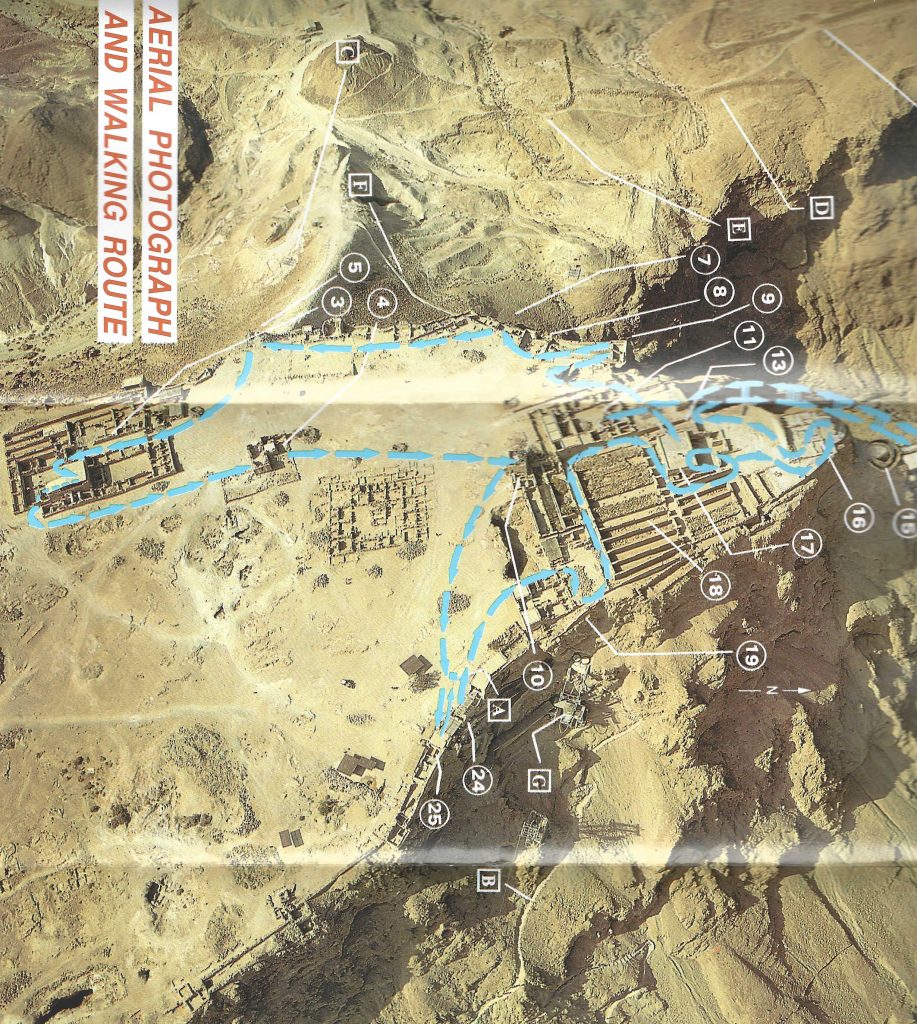
I’m still not quite sure why I agreed to take the sunrise tour of Masada. My experience at Lake Batur in Indonesia had broken me of a desire to get up early, go hiking, push myself and trip over things I can’t see just so I could climb to a great height and see a so-so sunrise. Besides, I’d seen it before. I knew all about how 967 Jewish Zealots killed themselves rather than surrender to Roman soldiers who had come to capture them and crush all that remained of a Judean revolt against Roman occupation that had begun four years before in the year 66. The only thing I hadn’t done the last visit was hike up the Snake Path to the mountain because I visited the landmark at mid-day when it was too hot for the 45 minute walk. So, I foolishly agreed to go, hoping there would be a spectacular sunrise, I would ooh and ah and then have a religious experience. Of course, none of these things happened.
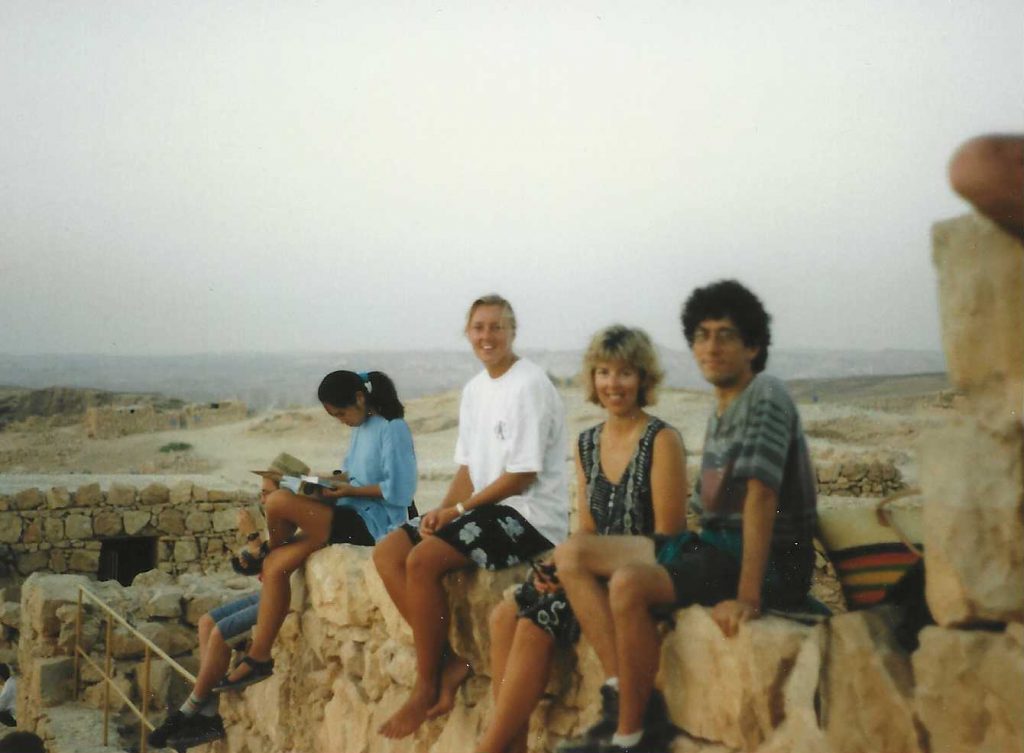
Go figure.
The odd thing about Masada is that it’s one of the few cases where losers wrote the history books. Although an argument could be made that the Jews whimped out by choosing the big dirt nap over slavery, Jews and Israelis hail this as a heroic act of defiance. Members of the armored division of the Israeli Defense Forces even come to the site every year and proudly proclaim “Masada shall not fall again.” I’m sure the Romans didn’t see it as such a heroic act, though. I’m still struck by how similar the first century siege in the desert was to the 20th century siege at David Koresh’s compound. The only difference between then and now was that reports of God talking to people were more frequent and more believable.
Apparently, any one who signs up for a group tour to Masada is also legally required to visit the Dead Sea and the Ein Gedi Nature Preserve because that’s what we did, even though many people just wanted to sleep. At the Dead Sea I discovered that a very salty body of water is not a good place to discover you have a cut on the bottom of your foot. I also learned how obnoxious soldiers can be at Ein Gedi when many of the people on the tour hiked to a swimming hole with a waterfall being occupied by two loud soldiers who were screaming at their friends to take pictures of them as they stood under the falls. Any woman who entered the swimming hole got groped.
Consequently, there were just two louts standing underneath the falls, one calling for Udy to take a picture and the other wondering why no woman would pose with him.
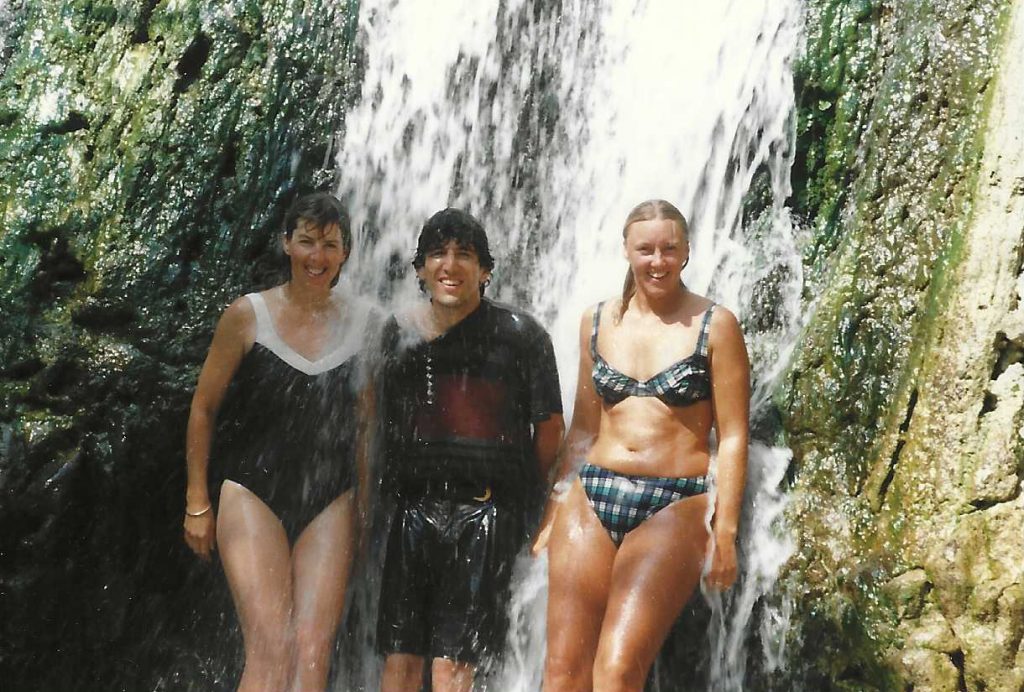
As we rode back to Jerusalem, we discussed our families. Belinda talked about her ex-fiancée and I mentioned my new niece. I also said I was glad my sister had a girl because I didn’t know what I’d have done if she had a boy. My sister would have held a bris and I would have felt obligated to attend. Both women looked puzzled until I explained a bris is a ritual circumcision required by Jewish law. Both women nodded thoughtfully after the explanation and conversation lagged until Nicole chimed in.
“Circumcised penises smell better than uncircumcised ones,” she said.
There are times when even I am rendered speechless.
Considering how eventful our tour of Masada was, I’m glad I didn’t join them on the Bethlehem tour. Sure, Jesus and Christianity are interesting, but I’d been visiting churches since Eastern Europe and I’d seen the Church of the Holy Sepulchre with them, so I was all Jesused out. Instead, I went to the logical end of the “Tragical History Tour”: Yad Vashem, Israel’s Holocaust Museum.
I visited the museum on the “Get-Off-The-Bus, Get-Back-On-The-Bus-Get-Back-Off-Again” tour in 1987, but didn’t get a sense of it because our guide gave us 90 minutes to see everything. It’s quite a tall order because the campus includes a historical museum that details the Holocaust through pictures and artifacts; a Hall of Names listing all of the victims of Hitler’s campaign against the Jews; a Hall of Remembrance with an eternal flame memorial and the names of concentration camps carved into the floor; an art museum featuring works from Jews in the ghettos and camps; and a Children’s Memorial where visitors can hear recorded voices read the names and ages of young victims while they look at a display of mirrors that makes a few small candles seem a sea of thousands of lights. There’s also the Valley of the Communities, a mazelike memorial to the villages destroyed in the Holocaust with the name of each little shtetl carved into the stones. I only made it through the historical museum during my first visit and swore I would return and take more time. That was when I decided independent travel was the way to go.
As I saw it, the Hall of Names was the last chance to find out what happened to my father’s family. If Yad Vashem didn’t have it, I figured I wouldn’t find it. My hopes were dashed when a docent told me it didn’t work the way I wanted. I needed to have the name of a relative who may have died in the Holocaust in order to look them up. Sadly, I didn’t know the names of any relative except my grandfather, Harry, who escaped the old country at the turn of the century. Since he hadn’t lived in Lodz, Poland in the years immediately before World War II, I couldn’t look him up.
When I told the document desk worker my family was from Lodz he told me there was one last chance. The museum was holding a special exhibit on the Jews of Lodz and featured a book listing the names of all the Jews in the city before the start of the war. I was so close to succeeding, I could almost taste it. All I had to do was check the book and hand him a list of the likely suspects so that the worker could look them up. After all, how popular could the name Wolkowicz be?
Apparently, very popular. There were 508. With 45 minutes before the museum closed there were far too many names to write down or look up and there was no copying machine. When the museum closed I left empty-handed. My mission had failed.
I would have been inconsolable if not for what I heard in the pedestrian shopping area of Ben Yehuda Street while I waited to meet Nicole and Belinda that evening. It was a man playing “New York, New York” on banjo and singing along.
Badly.
It was time to move on to my final goal: two months on a kibbutz.
